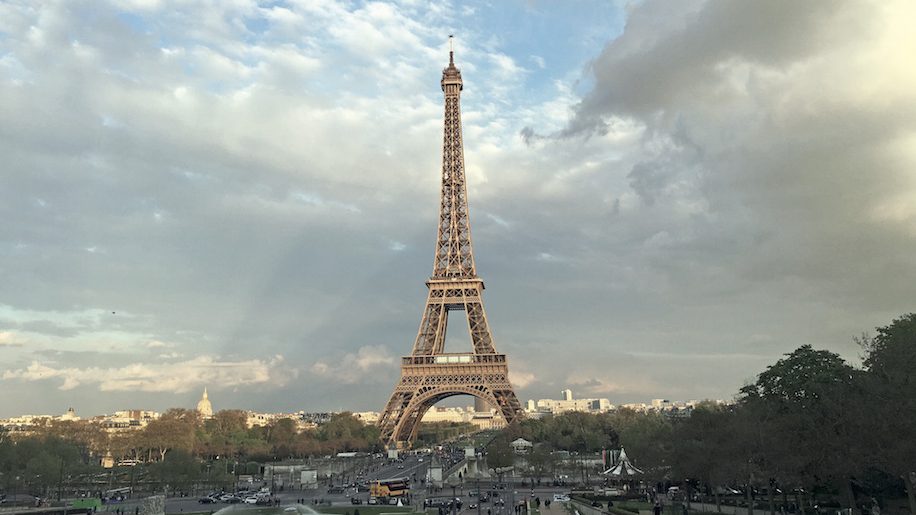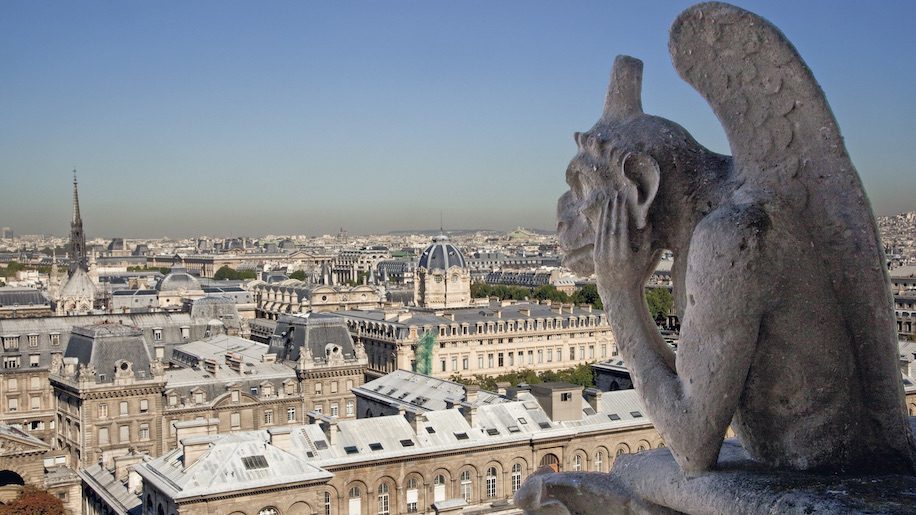After spending a few days in the slow- paced French Riviera, I boarded an Air France flight from Nice Côte d’Azur Airport to the French capital. It was my second visit to Paris and the busy Charles de Gaulle airport quickly snapped me out of my holiday on the coast. Being a big-city girl all my life, a part of me had missed this chaos. Besides, Paris is never really a bad idea.
On reaching the hotel, quick unpacking followed by two shots of Nespresso; I headed out to fall in love with this city all over again. Walking mindlessly on the banks of river Seine, I descended the stairs near Pont Neuf (directly translating to “New Bridge”, but is in fact the oldest bridge of Paris). Sitting by the banks of the river Seine, it’s easy to get drawn into this city’s vivacious charm. Devouring a caramel crêpe that was prepared at a street crêperie close by, I watched boats of various shapes and sizes pass by.
Seine is that one thread that sews this city together. A cruise on its waterway was long overdue. Taking the number nine metro line to Bir-Hakeim station (the Parisian metro is well mapped and quite easy to follow), I walked towards Port de la Bourdonnais, where a lunch reservation was made with Bateux Parisiens’ (bateauxparisiens.com) boat cruise. Relishing a four-course meal with Paris’ architectural marvels in the backdrop wasn’t a bad way of reigniting my love-affair with this city.
For my appetiser, I picked a poultry terrine flavoured with Menton lemon served with a porcini mushroom confit and baby leaf garnish. The cruise began at the most Parisian structure of them all, La tour Eiffel (The Eiffel Tower). The Tower, once the tallest in the world, stood idyllically against a romantic cloudy sky. It’s one of those things you can’t get enough of, we discussed as I sipped on some fine kir, a popular French cocktail made with a measure of crème de cassis (blackcurrant liqueur) topped up with white wine.
It was interesting to learn that this universal sign of love was once one of the most hated monuments by the French. Back in 1887, revolted by its design, 300 Parisian artists and intellectuals signed a manifesto that ran in the Le Temps newspaper on Valentine’s Day. It read: “We, writers, painters, sculptors, architects, passionate lovers of the beauty of Paris, hereby protest with all our might, with all our indignation, in the name of French taste gone unrecognised, in the name of French art and history under threat, against the construction, in the very heart of our capital, of the useless and monstrous (The) Eiffel Tower.”

Across the Seine from The Eiffel Tower lies the area of Trocadéro, that houses the Palais de Chaillot. This monument that replaced the old Palais du Trocadéro (public hall of Trocadéro), sits atop a hill with two neo-classical wings divided by a terrace that leads to the Jardins du Trocadéro (Trocadéro’ gardens). Since it’s at a height, this site offers panoramic views of The Eiffel Tower in all its glory. Try visiting at dawn to catch an unashamed sight, devoid of selfie sticks and newly wed couples.
Cruising along the river, the Grand Palais appeared to my left, a large museum and exhibition complex located at Champs-Élysées. Built in the Beaux-Arts style of architecture that originated in Paris, it is referred to as the “monument dedicated by the Republic to the glory of French art”. Currently being showcased is an exhibition of Belgian-artist Georges Remi’s art, known best for The Adventures of Tintin that runs until January 15, 2017. Visit grandpalais.fr/en to book your ticket.
Passing the Grand Palais, another masterpiece of the city’s heritage came into sight. The Musée d’Orsay, originally a former Beaux-Arts style railway station is one of the most highly regarded museums of the French capital. Those enamoured by impressionist and non-impressionist art will be spellbound by Musée d’Orsay’s collection of works by Monet, Sisley, Gauguin, and van Gogh.
I shifted between admiring the views from this glass-boat to my succulent main course, which was a cod poached in shrimp bouillon and served in a lemon and coriander sauce, with a side of fregola and vegetables. Minutes fly by when you’re in Paris. In no time, my boat reached Paris’ French-Gothic style “dame”. The cathedral of Notre-Dame, directly translating to ”Our Lady”, somehow remains etched in my memory as the foremost symbol of this city. There’s no doubt that climbing its 387 steps to reach the top is worth the €8.50/₹635 you’ll pay to enter the tower. While you get a closer perspective of its Gothic style elements such as its medieval gargoyles and chimeras, the view of the city from here is unparalleled. The Eiffel Tower stands tall towards the left and the river’s course is seen more clearly. Visit at dusk to see a magical play of light.

I stepped out into the boat’s deck and felt a nip in the air, as we made our way back to the original port. The monuments in reverse looked ever so glorious; and I kept my phone aside to feel the wind in my hair and listen to the sound of the waves on the river, as the cruise came to an end.
That evening we chose an alternative mode of transport to experience this city by road. Opting for a 2CV tour (2cvparistour.com), we were driven across the centre of Paris in this vintage Citroën. It was exhilarating to occasionally stand up from my seat to feel the Parisian air, traffic and magic. Perched up, my favourite part was the drive on the fashionable Champs-Élysées, across French labels and around Arc de Triomphe at Place Charles de Gaulle.
A brief conversation with my “artist-turned- driver” of last evening rung in my ears: “You haven’t seen Paris, if you haven’t seen Montmartre.” Known as the artistic hub of Paris, this large hill in Paris’ 18th arrondissement was on my list since my last time there. I hopped on to line two of the metro to exit at Blanche station for this much awaited tryst. The original cabaret bar — Moulin Rouge — with its classic windmill structure towards my left welcomed me to the bottom of this hill.
It’s clear that there is no dearth of historical artefacts in Paris. In fact, I’ve always believed that some of the best museums of Paris are its streets. Montmartre is the city’s best such example. Once home to Pablo Picasso and Vicent van Gogh, this area breathes of their bygone artistry that is embedded in its various corners and details. The best way to explore Montmartre is to make your way up towards the Sacré-Cœur, the famed white-domed basilica situated on the hill’s crest. Keep your Google maps on and walk on the cobbled streets of the steep rue (street) Lepic to come across the hidden treasures
of Montmartre.

Walking past Café des Deux Moulins, where the French-film Amélie was shot, I came across a large blue door with an emblem of the number 54. I learned that Vincent van Gogh had spent two years of his life behind this door along with Theo van Gogh, his younger brother and art dealer. It was during his time in Paris that Gogh had acquainted himself with the works of Claude Monet and Paul Gaugin, gaining substantial inspiration for his art.
Finding ateliers run by artists who work on their art as you walk across isn’t hard to find in this part of Paris. Strolling ahead, I came across the only surviving windmill and subject for van Gogh series — Moulin de la Galette. A few minutes later, showed up this edgy pink building with a striking painting of a rabbit leaning out of a saucepan. A former cabaret bar, Au Lapin Agile, was frequented by the then broke Pablo Picasso who had sold his self-portrait to the bar’s owner in exchange for food. Decades later, this painting was auctioned for €35 million by the heir of the owner. Quite the circle of life for both!
A brief stop over at the hub of Montmartre’s artist community — Place du Tertre — followed. This part of the hill bustles with cafes, restaurants, souvenir shops and street artists who painted sketches of Sacré-Cœur, that is further east. The highest point of Paris, the Roman-style basilica of Sacré-Cœur offers stunning panoramas of the city. Built of travertine, a type of limestone, entry to the basilica is free, however it costs €8/₹597 to enter its dome, where you can observe an even higher perspective of the French capital.
Anvers metro station is a minute’s walk from this point, across an alleyway flooded with crêperies and memento shops. Climbing down the stairs alongside a lush garden beneath this basilica, I paused to enjoy an espresso at a cafe with a direct view of the Sacré- Cœur. And that’s when I realised, Paris had once again effortlessly won my heart.













